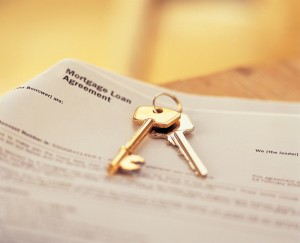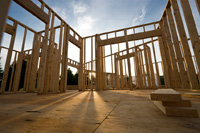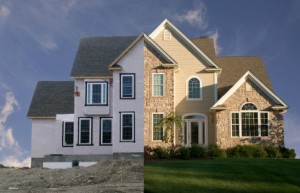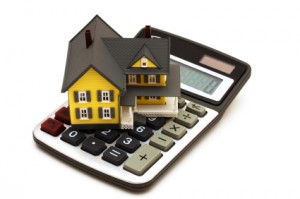You aren’t going to make a hasty decision when deciding upon your dream home, so why should you rush into a relationship with a mortgage lender? Let’s take a look at how to select the right lender to work with.
Blog
Archive for the ‘Financing’ Category
3 Tips for Choosing a Mortgage Lender
Monday, July 6th, 2015What are the Different Types of Mortgage Lenders?
Friday, June 26th, 2015Shopping for a mortgage is an important part of buying a new home. But many buyers find themselves confused by the variety of lenders out there. Even buyers who are not first-time buyers may find themselves wondering what the difference between a mortgage lender and a mortgage broker is. So in this week’s blog, we’ll talk about the different kinds of mortgage lenders and how they work, so you can make an informed decision when shopping for your mortgage!
4 Tax Benefits of Homeownership
Friday, May 1st, 2015Are you familiar with the numerous tax benefits of homeownership? There are lots of benefits that come with owning a home, including benefits that may result in tax savings for you, the home owner! In this week’s blog, we’ll talk about some of the tax benefits that come with owning a home. As always, please consult with your tax advisor for advice on your specific situation.
How Does Construction Permanent Financing Work?
Thursday, January 22nd, 2015When you’re building your own home, you have a number of financing options available to you. One of these options is construction permanent financing. There are a number of benefits that come with construction perm financing that can work in your favor and help simplify the process of building and financing your new home. Learn how construction permanent financing works and how it can benefit you below.
Construction Permanent Financing
How does it work?
The bank extends a line of credit to the builder known as a construction permanent loan. The loan is structured into 6 draws that are contingent on the home’s construction reaching 6 different phases of completion. For example, once the home is 50% complete, the builder will call for a draw on the loan. A bank inspector visits the property to verify that it is 50% complete and will then issue the funds for the next draw on the loan.
Once the home is complete, the bank retains 10% of the loan until the county issues a use and occupancy permit or equivalent, and the builder provides the bank with any remaining documents. The bank will then issue the last draw to the builder, and the loan is converted from a construction loan to a permanent loan. This can be done using a number of financing products.
What are the benefits for the homeowner?
Construction permanent financing offers a number of benefits to the homeowner.
- Closing Costs. With construction perm financing, the homeowner closes on the land before the home is built, as opposed to once the home is built. This means that the transfer tax (which is assessed at closing) is assessed on the value of the lot, instead of the lot and the home. This means the homeowner saves a significant amount on the transfer tax. Not to mention you only have to close once on the property.
- Interest on the Draw. During construction, you’ll only pay interest on the current draw, as opposed to the loan as a whole. This can also provide you with a potential tax benefit. (Consult your tax advisor. You have your choice of fixed or variable rate interest during construction as well.
- Lower Sales Price. When you use a construction permanent loan, you’ll receive a consumer rate as opposed to a commercial rate. This saves the builder money, a savings which will be passed on to you in the final sales price of your home.
These are a few of the major benefits of construction permanent financing, but they’re not the only ones. To learn more about using construction permanent financing to build your new home in Maryland, contact Lifetime Series Homes today.
What is Construction Permanent Financing?
Friday, October 17th, 2014Construction permanent financing is a financing option we offer that handles both the construction and post-construction phases of ownership of your home. This all-in-one financing solution is ideal because it streamlines the financing process with one coordinated plan with only one settlement, instead of two. Learn more about how construction permanent financing works in our blog.
Construction Permanent Financing
During Construction
During construction, the builder uses the construction permanent loan as a line of credit, structured into 6 draws, corresponding to phases of construction. When the builder completes a phase of construction, they will call for the next draw to continue construction. The lender sends an inspector to ensure verify construction is complete up to the next phase, and then releases the funds.
When the home is complete, the remaining 10% of the loan is held back until the use and occupancy permits and other documents are received, at which time the builder receives the final draw.
After Construction
At this point, the loan is converted into permanent financing, and is used to pay the lender for ownership of your home. There are a number of permanent financing options available for this stage.
The Advantages of Construction Permanent Financing
So what does the buyer stand to gain by choosing construction permanent financing? Lot’s of things! Here are some examples.
- Because you only close once when you purchase the land (as opposed to once on the land and once on the completed house), you stand to save a lot on closing costs and transfer tax. This tax is assessed on the value of the property at closing time, which would be a lot more on a completed lot than it would on an unimproved property.
- During the construction phase, you’ll only pay interest on the current draw, as opposed to the loan as a whole. This can result in potential tax benefits. Be sure to consult your tax advisor.
- With construction permanent financing, the builder can use a commercial line of credit to build the home, which is more affordable than the lines of credit usually available to the builder. These costs savings can be passed on to you in a lower sales price.
About the Lifetime Series Homes by Mueller Homes
The Lifetime Series Homes by Mueller Homes are a series of semi-custom house designs that were created with the intention of providing home buyers with a new option when it comes to shopping for a home. The Lifetimes series includes 14 home templates including, 2 story, first floor master, and ranchers that are pre-designed and ready to build. Because they are ready to build, clients save significant time and money that would have gone into designing a custom home, yet with the Lifetime Series by Muller Homes, clients still get the build quality, attention to detail, and communication that comes with working with a custom home builder. We serve the central Maryland area, and also provide assistance with lot acquisition, evaluation, and home buying finance. Keep up with us on our blog as well as on Facebook, Twitter, Google+, Pinterest and YouTube.
New Homes and Pre-Owned Homes: A Price Comparison
Friday, June 13th, 2014One common misconception about pre-owned homes and new homes is that the latter are generally more expensive. In fact, there are several costs associated with pre-owned homes that, when factored into the overall cost, make them comparable to or even more expensive than new homes. When comparing the prices of new homes and pre-owned homes, here are a few things to keep in mind.
New Homes and Pre-Owned Homes: A Price Comparison
Market Value
When it comes to the actual market value of the home, new homes and pre-owned homes are influenced by different factors. New homes are influenced only by the costs of construction, labor, land, and profit. In order for new homes to sell, the builder has to price them according to their real market value, because this can easily be determined by adding up the aforementioned costs.
The price of pre-owned homes, on the other hand, is influenced by many intangible factors that may sway them from their real market value. This includes things such as how much the homeowner still owes on the home, what they are looking to get so they can buy another home, and the fact that they may have overpayed for the home to begin with. This means that many of these costs get passed on to the buyer, thus inflating the price of the home above its real market value.
Taxes
Another cost that is more expensive with a pre-owned home than a new home is the cost of property taxes. Taxes are assessed on the value of a property from January of the year before. For example, property taxes paid in 2014 are actually based on the assessed value of the property in 2013.
This means that for a pre-owned home, you would be paying taxes on the full value of the property (land and house) as soon as you owned it. With a new home on the other hand, you would pay taxes, for a time, on the value of the land only, because the house had not yet been built on it. This is advantageous to you and will save you money during the early phase of your homeownership.
Repairs and Upgrades
The costs of repairs and upgrades often come into play after the purchase of a pre-owned home. Repairs and upgrades for old appliances, HVAC systems, energy efficiency upgrades, and more can easily run up the cost of a pre-owned home. New homes, on the other hand, are built with the latest features and technology, making them more efficient, more durable, and less expensive.
About the Lifetime Series Homes by Mueller Homes
The Lifetime Series Homes by Mueller Homes are a series of semi-custom house designs that were created with the intention of providing home buyers with new option when it comes to shopping for a home. The Lifetimes series includes 14 home templates including, 2 story, first floor master, and ranchers that are pre-designed and ready to build. Because they are ready to build, clients save significant time and money that would have gone into designing a custom home, yet with the Lifetime Series by Muller Homes, clients still get the build quality, attention to detail, and communication that comes with working with a custom home builder. We serve the central Maryland area, and also provide assistance with lot acquisition, evaluation, and home buying finance. Keep up with us on our blog as well as on Facebook, Twitter, Google+, Pinterest and YouTube.
Source
http://www.zillow.com/wikipages/Why-Buy-New—Benefits-of-New-Construction/
What are the Benefits of Construction Permanent Financing?
Wednesday, April 23rd, 2014Construction permanent financing is a means of financing the construction of and payment for your finished semi-custom home from Lifetime Series Homes. You can read about how construction permanent financing works in our blog here. In short, there are several structured payments during the construction of the home. Once the home is completed, the loan is converted into a permanent loan.
The Benefits of Construction Permanent Financing
Savings on Closing Costs
One of the parts of closing costs is transfer tax. With construction permanent financing, you close on the land before the house is even built. This means transfer tax is assessed on the lot only and not the construction of the home. This can save you a good deal in transfer tax and therefore closing costs.
Tax Benefits from Interest Paid of the Loan
Loan payments for the construction of your home are spread out in several payments. You only pay interest on individual payments during the construction of your home, as opposed to one lump sum, meaning your interest costs could potentially be reduced. (Always consult your tax adviser).
Lower Sales Price
When you use construction permanent financing, the builder uses the consumer rate for the line of credit, which is less than the commercial rate they would have used had it built the home on its own. The consumer rate is generally less than the commercial rate, so the builder will pass on these savings to you.
About the Lifetime Series Homes by Mueller Homes
The Lifetime Series Homes by Mueller Homes are a series of semi-custom house designs that were created with the intention of providing home buyers with new option when it comes to shopping for a home. The Lifetimes series includes 14 home templates including, 2 story, first floor master, and ranchers that are pre-designed and ready to build. Because they are ready to build, clients save significant time and money that would have gone into designing a custom home, yet with the Lifetime Series by Muller Homes, clients still get the build quality, attention to detail, and communication that comes with working with a custom home builder. We serve the central Maryland area, and also provide assistance with lot acquisition, evaluation, and home buying finance. Keep up with us on our blog as well as on Facebook, Twitter, Google+, Pinterest and YouTube.
Source
http://www.lifetimeserieshomes.com/construction-perm-financing-basics.php
How Does Construction Permanent Financing Work?
Friday, April 11th, 2014Construction permanent financing is a method of financing available for the construction of your new home.
How Does it Work?
Essentially, it works as a line of credit that the builder uses to construct your new semi-custom home in Maryland. It’s structured in phases, allowing construction to progress at a structured rate. For example, after phase one of construction is complete, the builder calls for a draw of funds. An inspector from the bank comes to the property, determines that the phase has been finished, and allows for a disbursement of funds to continue with the next phase of construction. This continues until construction is finished. When the semi-custom home is complete, the bank holds back 10% of the construction amount until the builder supplies necessary documentation and the county issues the use and occupancy permit. The bank then releases these funds, and the loan is converted into permanent financing.
How Does Construction Permanent Financing Benefit Me?
There are several benefits of construction permanent financing, many of them having to do with tax savings. (Make sure to always consult your tax adviser.)
This type of financing allows you to save on transfer tax, which is a part of the closing cost on any home. Because you are taking out a construction loan, you close on the property before the home is built. This means the tax is assessed on the price of the lot, not the construction, which results in significant savings compared to purchasing an already finished home.
Another tax benefit comes about as a result of the structured nature of the loan. Because the loan payment is structured in phases, you only have to pay interest on the amount drawn out per phase, not on the entire loan. You also save on a construction permanent loan vs. a commercial line of credit, because a builder would include the additional costs of the latter in the final sales price. For more information, don’t hesitate to contact us today.
About the Lifetime Series Homes by Mueller Homes
The Lifetime Series Homes by Mueller Homes are a series of semi-custom house designs that were created with the intention of providing home buyers with new option when it comes to shopping for a home. The Lifetimes series includes 14 home templates including, 2 story, first floor master, and ranchers that are pre-designed and ready to build. Because they are ready to build, clients save significant time and money that would have gone into designing a custom home, yet with the Lifetime Series by Muller Homes, clients still get the build quality, attention to detail, and communication that comes with working with a custom home builder. We serve the central Maryland area, and also provide assistance with lot acquisition, evaluation, and home buying finance. Keep up with us on our blog as well as on Facebook, Twitter, Google+, Pinterest and YouTube.






